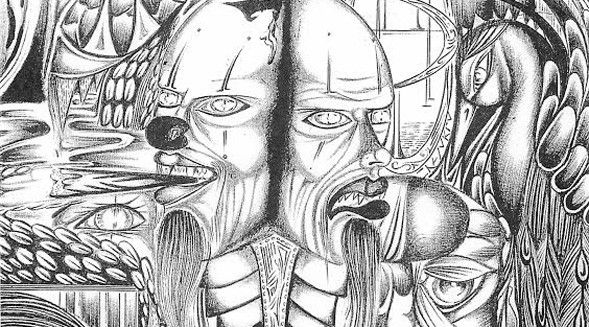Criminal Art and Creative Crime
A new SDSU Library exhibit explores the intersecton of two very different human ventures.

A panel discussion with artists and curators of this exhibit is scheduled for 2 p.m. on Thursday, March 20, in Love Library, room LL108.
A glimpse into the minds of America’s incarcerated men and women is on display through May in the San Diego State Library’s Donor Hall.
“Shadow Spaces from the Art / Crime Archive” is a two-pronged exhibit featuring prisoner-made art plus the work of Stephen Chalmers, who photographs sites in nature where serial killers have disposed of their victims.
“The Prison Art Project” showcases drawings by prisoners and simultaneously analyzes the art to offer a complex representation of life behind bars. It was curated by artist Brian Goeltzenleuchter together with SDSU students and Laura Pecenco, a doctoral candidate in sociology at University of California, San Diego. Pecenco’s dissertation research involves analyzing prisoner-made art.
Chalmers’ photographs, presented in the exhibit “Interrogating Dump Sites,” display the crime scenes as wild spaces reverted to their natural state, implicitly posing the question: Is there something exploitative about using these spaces for aesthetic notoriety or can art somehow beautify the law enforcement practice of documenting crime scenes?
Both Chalmers and Pecenco will participate in the March 20 panel discussion moderated by Goeltzenleuchter and Paul Kaplan, SDSU professor of criminal justice. Kaplan and Goeltzenleuchter are co-directors of the Art / Crime Archive, a mobile art space, teaching and performance center and web-based platform devoted to the spaces where art and crime overlap.
Kaplan, who joined SDSU in 2007, previously worked as a mitigation investigator on capital cases in California. His primary research area is capital punishment, but he also works on projects involving sociolegal theory, cultural criminology and comparative law.



